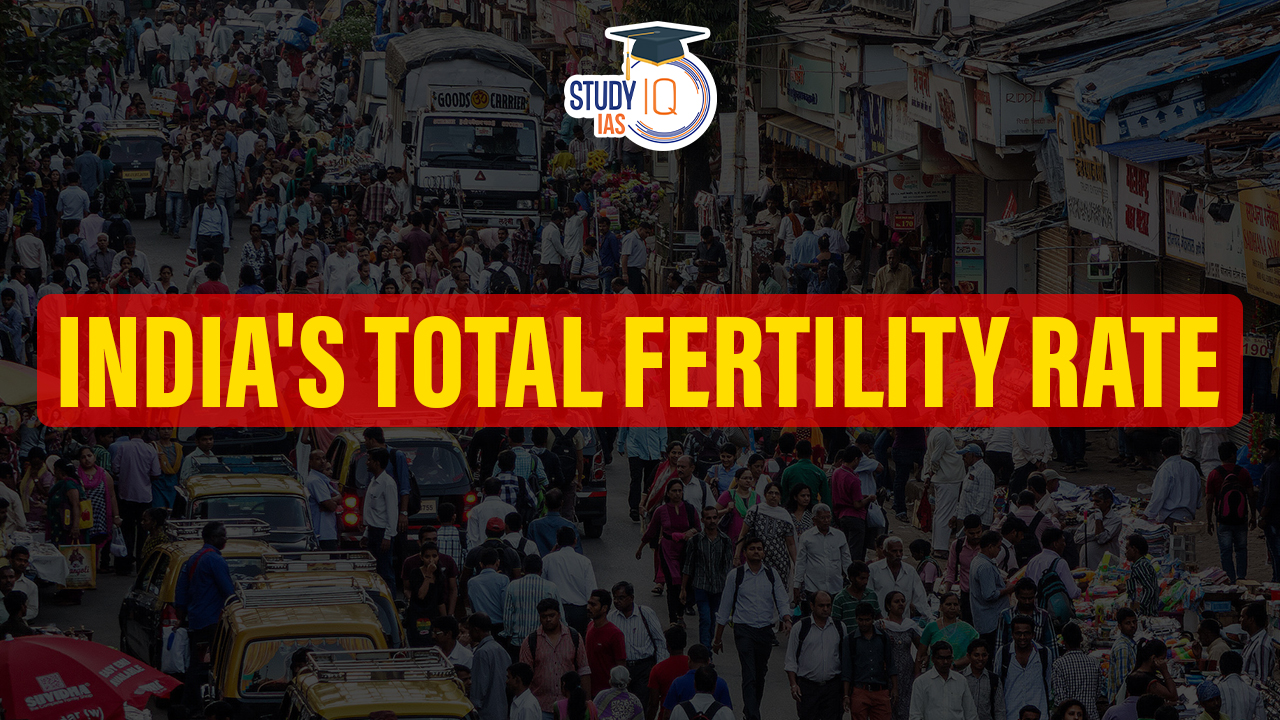Table of Contents
Context:
- According to a study published in The Lancet, the Total Fertility Rate (TFR) worldwide has significantly decreased from about five children per woman in 1950 to 2.2 children in 2021.
- By 2050, 76% (155 out of 204 countries) will have a TFR below the replacement level of 2.1 children per woman. By 2100, this is expected to rise to 97% (198 countries).
India’s Fertility Rate: A Closer Look
- TFR Evolution: India’s TFR has sharply fallen from 6.18 in 1950 to 4.60 in 1980, and further to 91 in 2021.
- Future Projection: By 2050, one in five Indians will be a senior citizen, indicating a shift towards an ageing population similar to China’s current demographic challenges.
Reasons for Declining Fertility in India
- Family Welfare Programme: Post-independence efforts to control population growth through health and welfare programs encouraged families to have no more than two children.
- Economic Shifts: The reversal of intergenerational wealth flow, where parents see reduced benefits from offspring, influencing decisions against having additional children.
- Female Literacy and Workforce Participation: Increased education and career opportunities for women have led to a preference for smaller families or decisions against having children.
Long-term Consequences
- Increase in Elderly Population: The proportion of senior citizens in India is expected to exceed 20% by 2050, stressing the need for adequate senior care and support systems.
- Labour Shortages: Anticipated reductions in the working-age population may lead to labour force challenges.
- Gender Imbalance: Persisting gender preferences could further exacerbate social imbalances.
Mitigation and Future Strategies
- Scandinavian Model: Emphasis on supporting families through affordable childcare, healthcare investments, and initiatives for gender equity.
- Economic and Social Policies: The importance of policies that stimulate economic growth, job creation, social security, and pension reforms to adapt to demographic shifts.
Global Implications
- Population Management: The decline in fertility rates suggests that countries may need to consider ethical and effective immigration policies to maintain population levels.
We’re now on WhatsApp. Click to Join
|
Important Terms |
Total Fertility Rate (TFR)
Replacement Level
|


 SAMARTH Udyog Bharat 4.0: Transforming I...
SAMARTH Udyog Bharat 4.0: Transforming I...
 BHIM 3.0 Launched by NPCI: Key Features,...
BHIM 3.0 Launched by NPCI: Key Features,...
 150th Summit of Inter-Parliamentary Unio...
150th Summit of Inter-Parliamentary Unio...





















